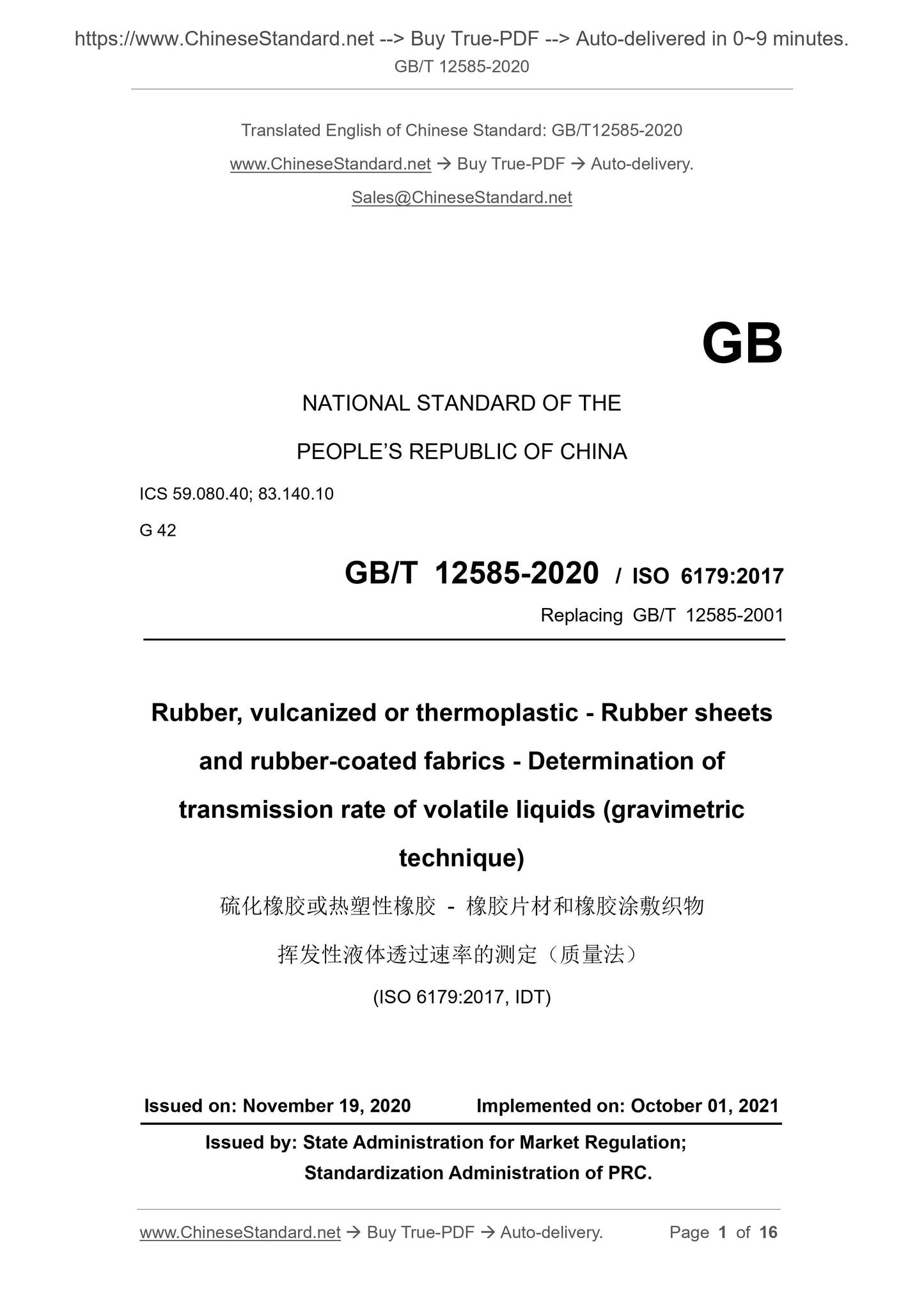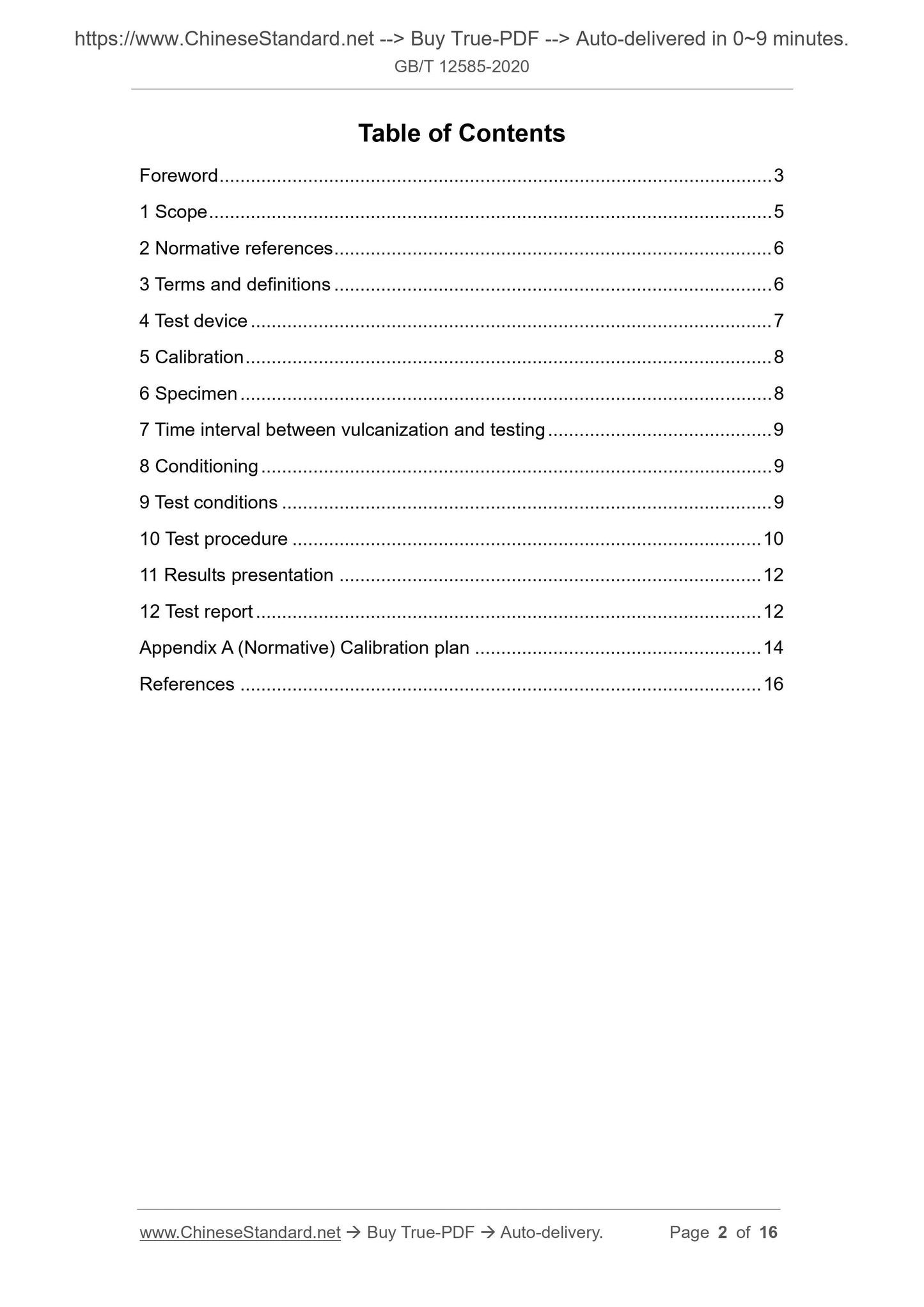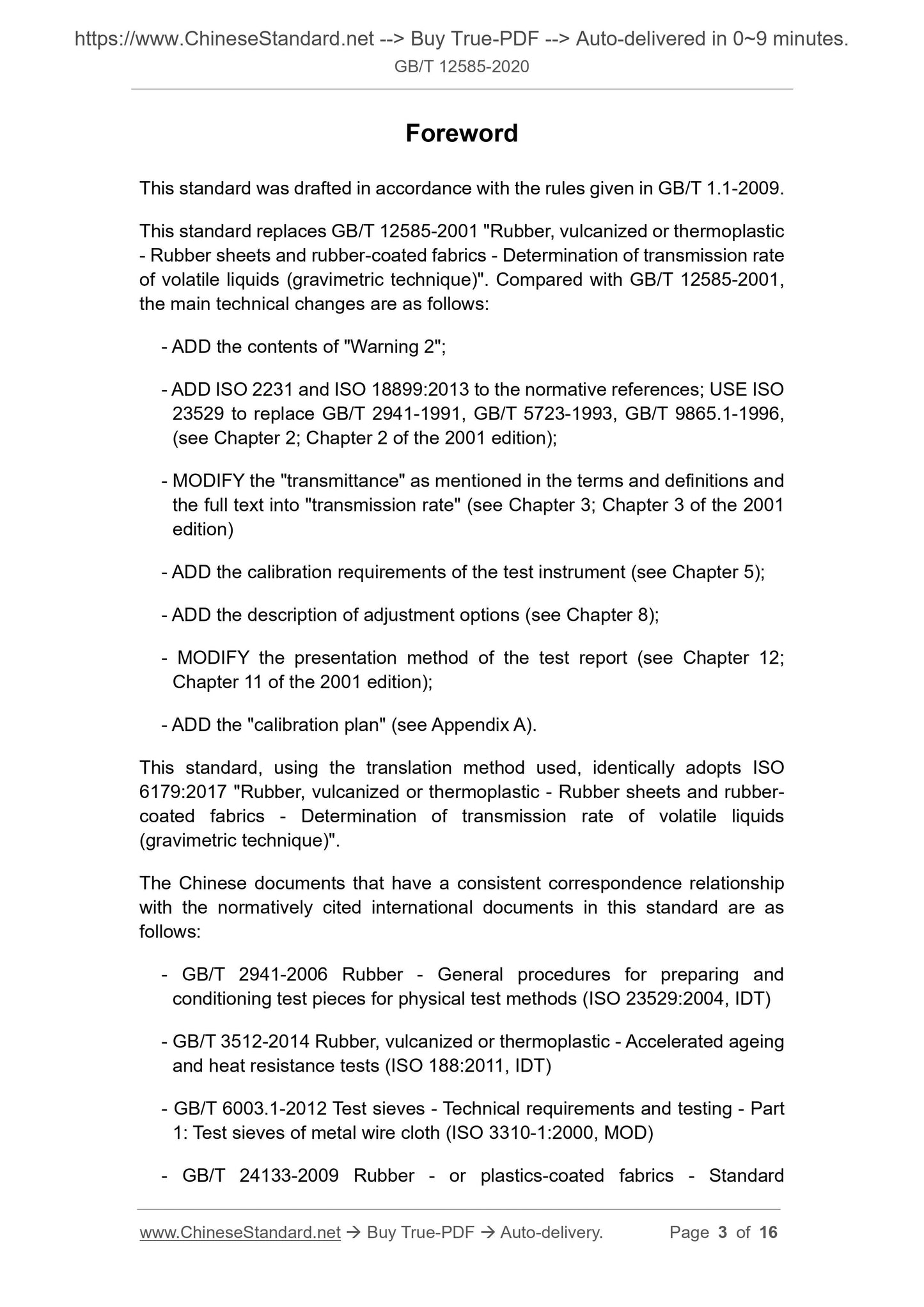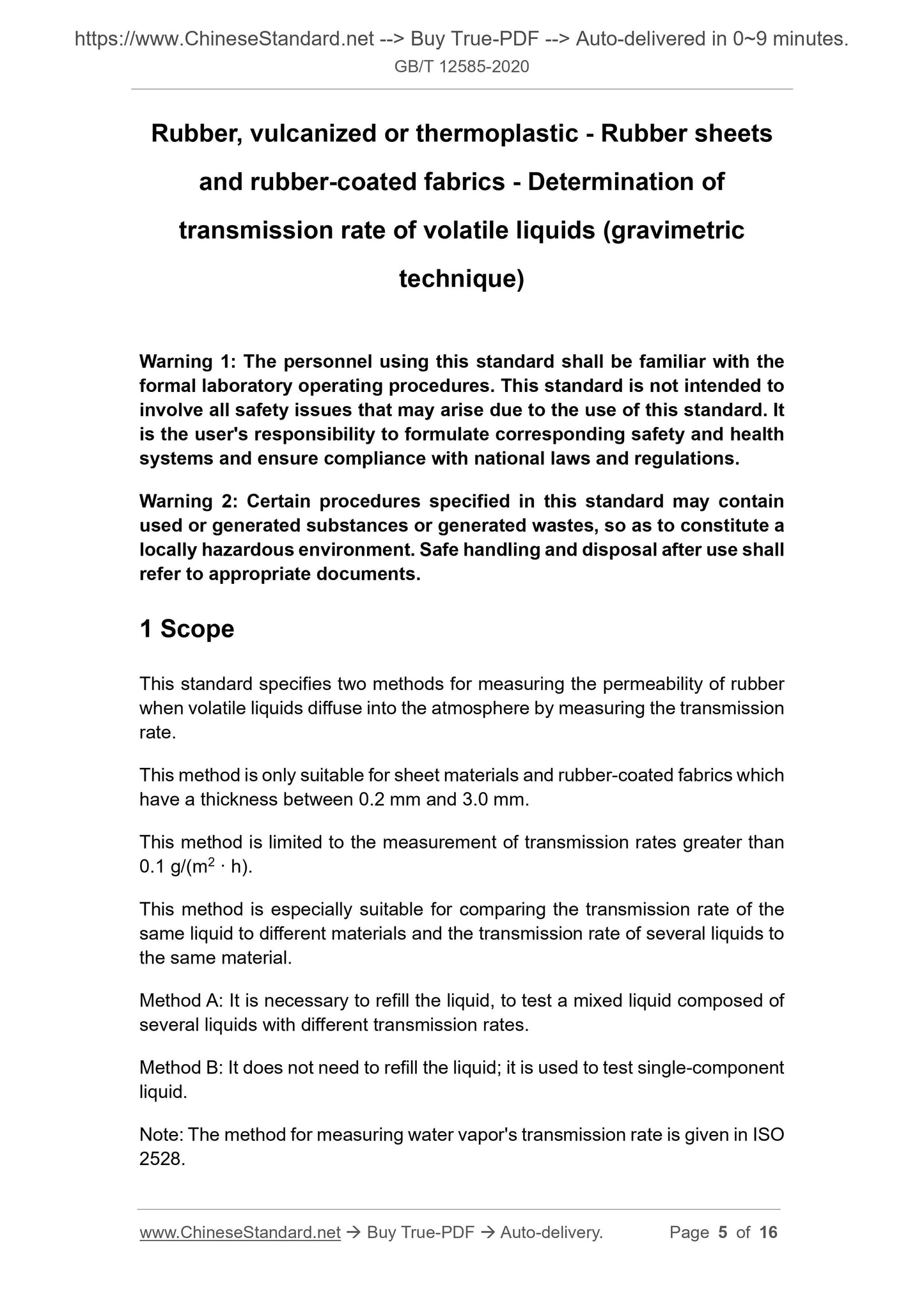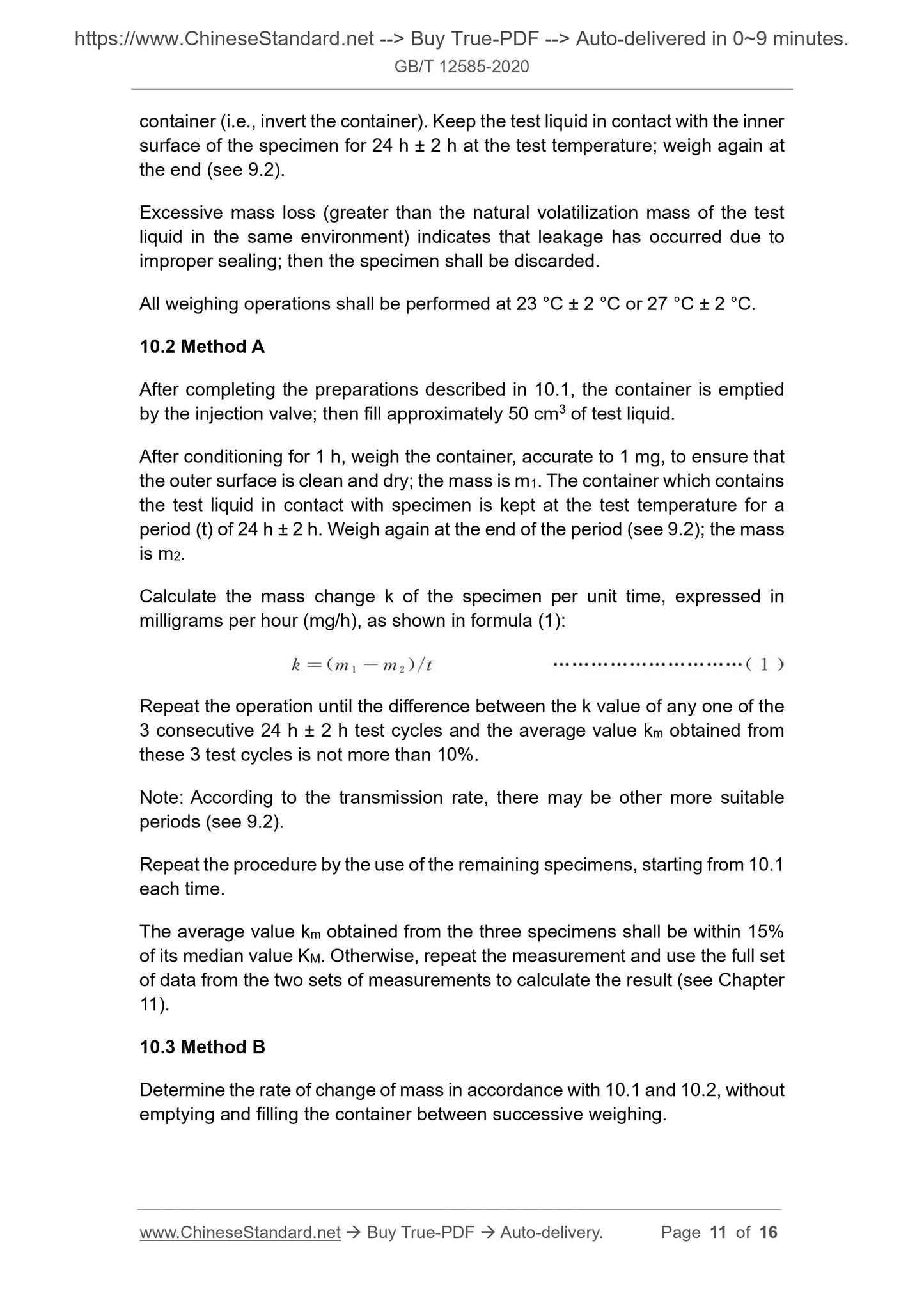1
/
of
5
www.ChineseStandard.us -- Field Test Asia Pte. Ltd.
GB/T 12585-2020 English PDF (GB/T12585-2020)
GB/T 12585-2020 English PDF (GB/T12585-2020)
Regular price
$185.00
Regular price
Sale price
$185.00
Unit price
/
per
Shipping calculated at checkout.
Couldn't load pickup availability
GB/T 12585-2020: Rubber, vulcanized or thermoplastic. Rubber sheets and rubber-coated fabrics. Determination of transmission rate of volatile liquids(gravimetric technique)
Delivery: 9 seconds. Download (and Email) true-PDF + Invoice.Get Quotation: Click GB/T 12585-2020 (Self-service in 1-minute)
Newer / historical versions: GB/T 12585-2020
Preview True-PDF
Scope
This standard specifies two methods for measuring the permeability of rubberwhen volatile liquids diffuse into the atmosphere by measuring the transmission
rate.
This method is only suitable for sheet materials and rubber-coated fabrics which
have a thickness between 0.2 mm and 3.0 mm.
This method is limited to the measurement of transmission rates greater than
0.1 g/(m2 · h).
This method is especially suitable for comparing the transmission rate of the
same liquid to different materials and the transmission rate of several liquids to
the same material.
Method A: It is necessary to refill the liquid, to test a mixed liquid composed of
several liquids with different transmission rates.
Method B: It does not need to refill the liquid; it is used to test single-component
liquid.
Note: The method for measuring water vapor's transmission rate is given in ISO
2528.
container (i.e., invert the container). Keep the test liquid in contact with the inner
surface of the specimen for 24 h ± 2 h at the test temperature; weigh again at
the end (see 9.2).
Excessive mass loss (greater than the natural volatilization mass of the test
liquid in the same environment) indicates that leakage has occurred due to
improper sealing; then the specimen shall be discarded.
All weighing operations shall be performed at 23 °C ± 2 °C or 27 °C ± 2 °C.
10.2 Method A
After completing the preparations described in 10.1, the container is emptied
by the injection valve; then fill approximately 50 cm3 of test liquid.
After conditioning for 1 h, weigh the container, accurate to 1 mg, to ensure that
the outer surface is clean and dry; the mass is m1. The container which contains
the test liquid in contact with specimen is kept at the test temperature for a
period (t) of 24 h ± 2 h. Weigh again at the end of the period (see 9.2); the mass
is m2.
Calculate the mass change k of the specimen per unit time, expressed in
milligrams per hour (mg/h), as shown in formula (1):
Repeat the operation until the difference between the k value of any one of the
3 consecutive 24 h ± 2 h test cycles and the average value km obtained from
these 3 test cycles is not more than 10%.
Note: According to the transmission rate, there may be other more suitable
periods (see 9.2).
Repeat the procedure by the use of the remaining specimens, starting from 10.1
each time.
The average value km obtained from the three specimens shall be within 15%
of its median value KM. Otherwise, repeat the measurement and use the full set
of data from the two sets of measurements to calculate the result (see Chapter
11).
10.3 Method B
Determine the rate of change of mass in accordance with 10.1 and 10.2, without
emptying and filling the container between successive weighing.
Basic Data
| Standard ID | GB/T 12585-2020 (GB/T12585-2020) |
| Description (Translated English) | Rubber, vulcanized or thermoplastic. Rubber sheets and rubber-coated fabrics. Determination of transmission rate of volatile liquids(gravimetric technique) |
| Sector / Industry | National Standard (Recommended) |
| Classification of Chinese Standard | G42 |
| Classification of International Standard | 59.080.40; 83.140.10 |
| Word Count Estimation | 11,146 |
| Date of Issue | 2020-11-19 |
| Date of Implementation | 2021-10-01 |
| Older Standard (superseded by this standard) | GB/T 12585-2001 |
| Quoted Standard | ISO 188; ISO 2231; ISO 2286-3; ISO 3310-1; ISO 18899-2013; ISO 23529 |
| Adopted Standard | ISO 6179-2017, IDT |
| Regulation (derived from) | National Standard Announcement No. 26 of 2020 |
| Issuing agency(ies) | State Administration for Market Regulation, China National Standardization Administration |
| Summary | This standard specifies two methods for determining the permeability of rubber when volatile liquids diffuse into the atmosphere by measuring the transmission rate. This method is only suitable for sheet materials and coated fabrics with a thickness between 0.2 mm and 3.0 mm. This method is limited to the determination of the transmission rate greater than 0.1 g/(m^(2)��h). This method is especially suitable for comparing the transmission rate of the same liquid to different materials and the transmission rate of several liquids to the same material. Method A: It is necessary to refill the liquid to test a mixed liquid composed of several liquids with different transmission rates. Method B: No need to refill the liquid, for testing single-component liquids. |
Share
